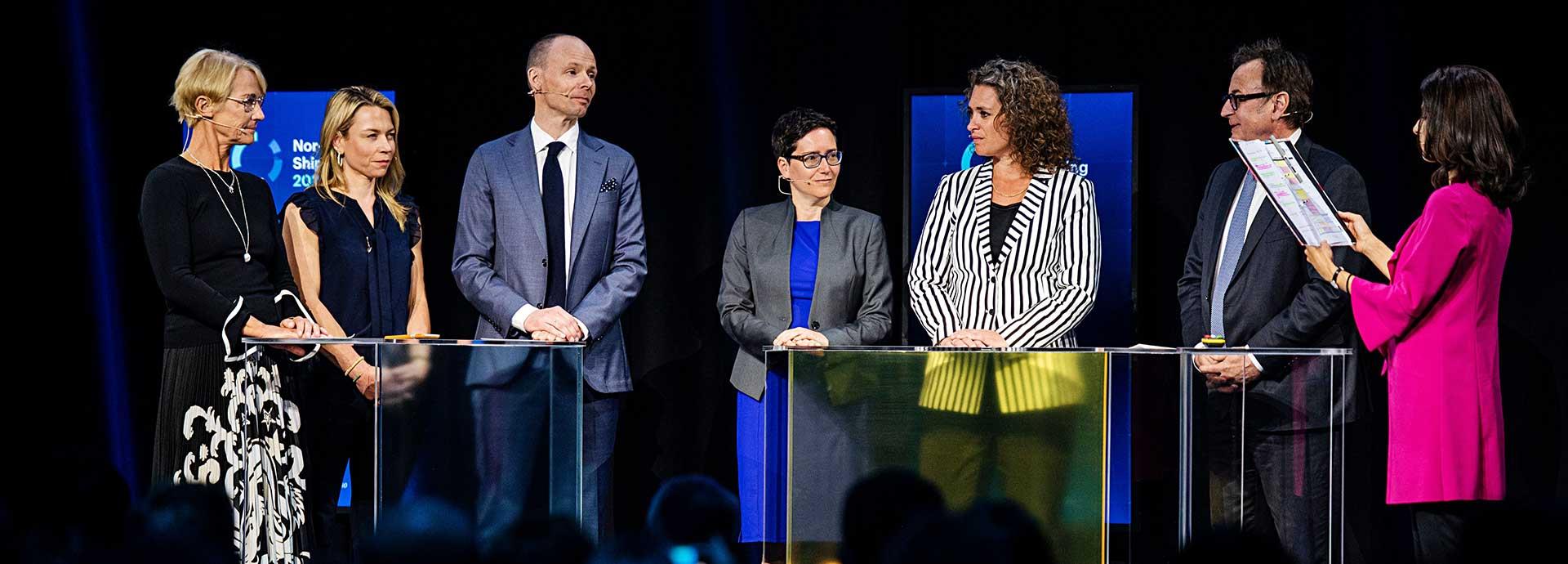

What if our shipping routes could be organised in the same way as our highways – with ships docking at offshore stations to refill their reservoirs with clean fuel? What if there were no carbon emissions from the shipping industry and no pollution at the ports?
The Wärtsilä-led ZEEDS (Zero Emission Energy Distribution at Sea) initiative envisions this kind of future, in which an entire ecosystem of offshore clean fuel production and distribution hubs would be strategically deployed across the globe. Apart from Wärtsilä, the initiative also includes companies such as Aker Solutions, an offshore engineering and technology company; DFDS, an international shipping and logistics company; Equinor, a multinational energy company; Grieg Star, an international shipowner; and Kvaerner, a provider of engineering, procurement and construction services.
“The challenge today is really to decarbonise the shipping industry – that was the rationale behind our initiative,” explains Cato Esperø, sales director at Wärtsilä Norway. “We invited other companies to partner up with us so that we can share knowledge and competencies. This type of collaboration is necessary if we want a sustainable future for the shipping industry.”
Cleaning up shipping
Despite being more environmentally friendly than air freight, maritime shipping still accounts for 940 million tonnes of CO2 emissions per year, representing approximately 2 - 3 per cent of total global greenhouse gas emissions. According to a recent European Commission report on ship fuel oil consumption, if the shipping sector were a country, it would rank sixth in the amount of emissions produced in the world. Until now, the maritime industry has been lagging behind others in addressing the current emission reduction targets. The ZEEDS initiative, rooted in the decarbonisation target set out in the Paris Agreement, hopes to rectify this and switch the transition to carbon-neutral shipping into a higher gear.
Clean energy floating hubs
Egil Hystad, General Manager - Concept Development and Integration at Wärtsilä Marine Solutions, is aware that the maritime industry needs to undergo an encompassing transformation to meet decarbonisation targets. “There are many small-scale initiatives out there already. A hydrogen-powered ferry here, a battery boat there. But that isn’t enough,” he explains.
Besides fleet transformation, the industry also needs to address the logistics aspects of the shipping industry, starting from bunkering and distribution. “We realised the main challenge was to quickly establish the infrastructure that would be able to support the global fleet,” Hystad adds.
The infrastructure of the future (as imagined by all companies involved in ZEEDS) is composed of fuel hubs set up next to offshore wind turbines, built as two-level platforms. The energy produced by the wind turbines would be used to produce hydrogen from water on the first level of the platform; while on the second level, ammonia, a clean fuel, would be made from hydrogen and nitrogen extracted from the air.
“Ammonia is clean and easy to store,” explains Hystad. “But the hubs are not ammonia-exclusive. In the future, we could see other developments in the clean fuels industry, and the hubs could be readapted to work with the new fuels.”
Ammonia would be stored in seabed tanks using water pressure to keep the fuel liquid, and subsequently brought to the surface via bunkering buoys, from which easily manoeuvrable, Energy Providing Vessels (EPVs), would be used to bunker the ships. This method is designed to avoid “traffic jams” in the main hub area. A one-hour bunkering operation would provide ships with enough fuel for eleven days of operation. Such fuel stations would be located in highly trafficked areas so that vessels would need to pay fewer visits to ports to refuel, hence reducing their overall transportation time and port traffic.
A role-model for the world
The ZEEDS concept was initially modelled for the North Sea and Baltics, where some of the busiest shipping corridors are located, and where the development of renewables is already highly advanced. “We envisioned 74 wind turbines for each hub which would be able to support 2500 cubic meters of ammonia every day,” explains Egil Hystad. “This amount is enough to supply 147 vessels per hub. With five hubs, we'd support some 750 vessels, which is half of the fleet operating in these seas.”
The initiative employs known and available technologies by combining them in a new way, and it is completely scalable. The same models could be transplanted to deep-sea, long-haul shipping that is responsible for 70 per cent of the emissions. “We are looking at the same principles and the same setup, just with fewer ships and a larger quantity of energy for bunkering,” explains Hystad.
The ZEEDS project is still in an early phase, so the technical solutions and choice of fuel could change, says Esperø. “We are still looking into different solutions and following the developments in the market. There are other companies out there looking into different innovations, and we are open for collaborations,” he says.
There are of course challenges, such as the availability of renewable energy at a low cost. “Any change needs to come in a sustainable way, we cannot act on it overnight. If we had all the technology ready today, we would still need to find mechanisms that allow for the sustainable change,” clarifies Esperø. But he is certain initiatives like ZEEDS will find a receptive audience. “It is our investment in the future,” he states.


